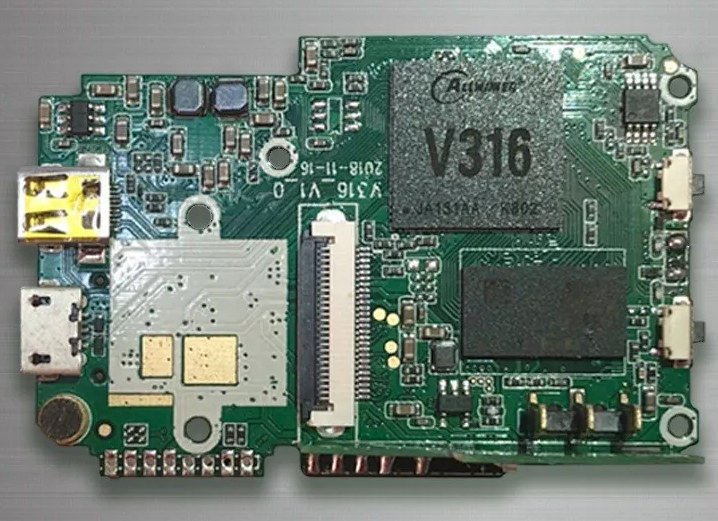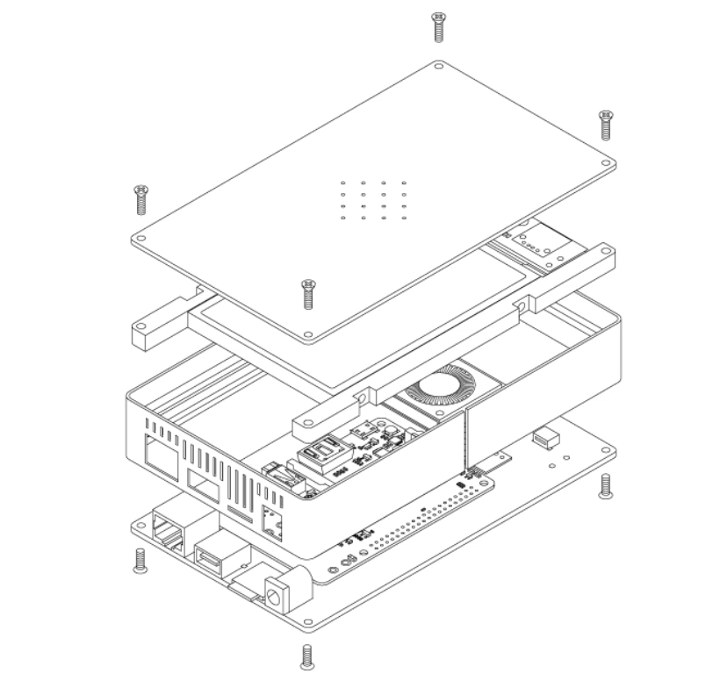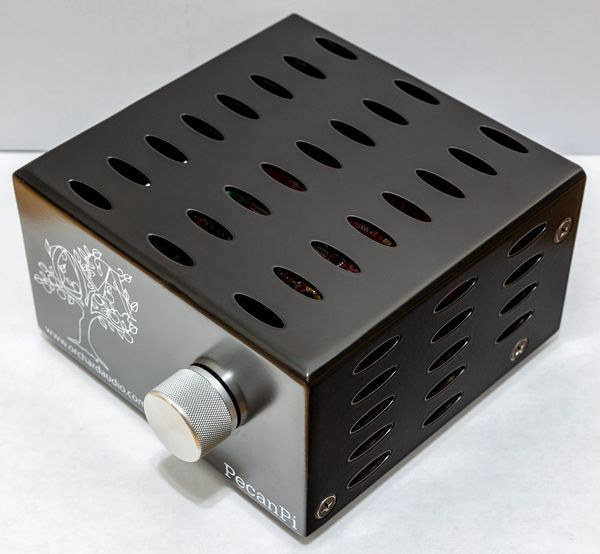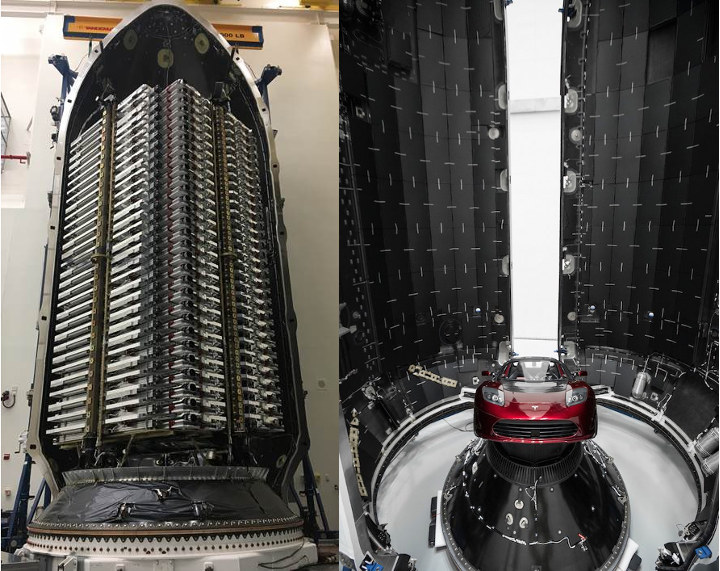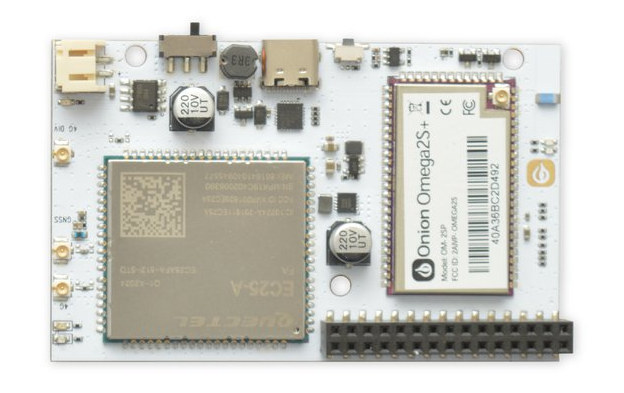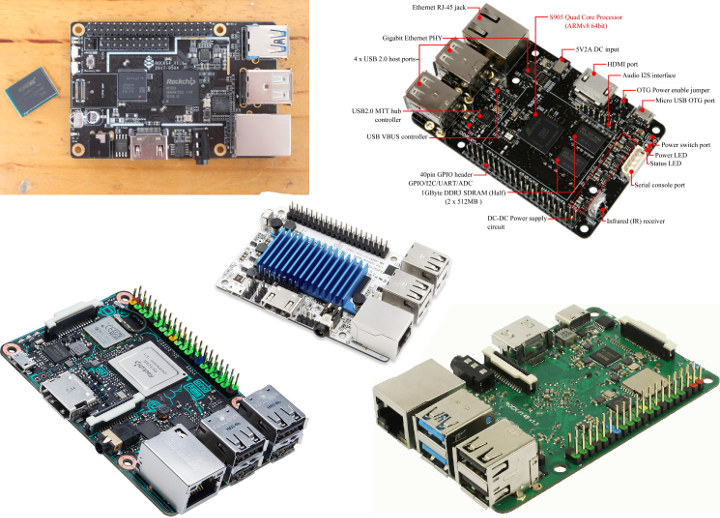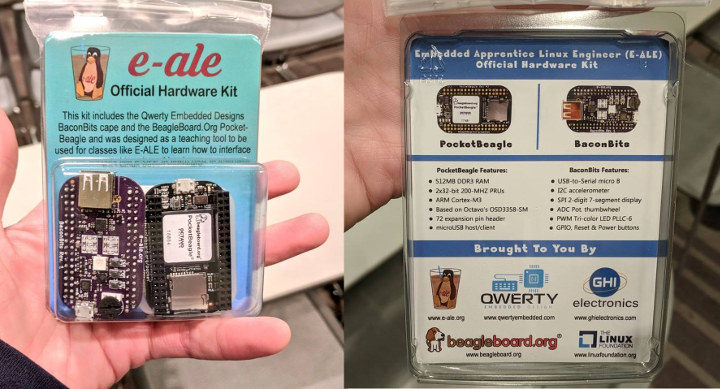Allwinner V-Series processors target camera applications, especially sports and action cameras, and we’ve already coverd Allwinner V3 single core Arm Cortex-A7 processor for 1080p60 / 4K15 cameras, as well as Allwinner V5 quad core Cortex-A7 processor for 4K30 cameras enhanced with artificial intelligence capabilities. Allwinner has showcased and/or unveiled more Cortex-A7 processors at CES Asia 2019 such as Allwinner R328 for voice applications, or Allwinner T7 for automotive dashboards, as well as a new camera processor called Allwinner V316 with two Arm Cortex-A7 cores, apparently the same 4K @ 30 fps H.265/H.264 encoder as in V5, but without AI engine architecture. Allwinner V316 key features and preliminary specifications: CPU – Dual core Arm Cortex-A7 processor @ 1.2 GHz ISP – HawkView 6.0 image processor with 2D/3D intelligent noise reduction, frame width dynamic synthesis, sharpening enhancement, specific color enhancement and other image pre-processing techniques Video – 4K Smart H.264/H.265 video encoder […]
NODE Mini Server V2 is a Raspberry Pi Based Storage Server for the Decentralized Web
We’ve previously covered networked hard drive enclosures with Ethernet and/or WiFi running OpenWrt or Ubuntu that allows you to easily and fairly cheaply connect SATA drives to your local network with models such as Blueendless X3. NODE has done something similar with a DIY project featuring a Raspberry Pi 3 Model B+. NODE Mini Server V2 connects the popular SBC to a 2.5″ SATA hard drive over USB and is designed to build out the physical infrastructure for the decentralized web (e.g. IPFS) that would allow users to replace remote servers with nodes that they themselves own and operate. Having said that nothing would prevent you from using this as a simple NAS although performance will not be as optimal as the aforementioned products due to the lack of SATA or USB 3.0 interface, as well as having “Gigabit” Ethernet limited to 300 Mbps. Having said that the design could […]
PecanPi Audio Streamer with Volumio, Squeeze or Rune Audio Goes for $399
We’ve recently covered the upcoming Volumio Motivo audio streamer, but there’s another product for audiophiles running Volumio audio software. Orchard Audio PecanPi Streamer is based on Raspberry Pi 3 boards combined with the company PecanPi DAC HAT bringing high-quality audio to the Raspberry Pi. PecanPi Streamer specifications: SBC – Raspberry Pi 3 Model B with WiFi, Ethernet, 4x USB ports. PecanPi DAC HAT Texas Instruments PCM1794A high performance stereo 24-bit DAC, 192KHz sampling HW volume control and re-clocking via TI SRC4193 sample rate converter XLR Output: Signal to Noise Ratio (SNR): 130dB (A-weighted) Dynamic Range (DNR): 125dB Total Harmonic Distortion + Noise (THD+N): -110dB or 0.0003% Output Voltage: 5Vrms RCA Output: Signal to Noise Ratio (SNR): 124dB (A-weighted) Dynamic Range (DNR): 121dB Total Harmonic Distortion + Noise (THD+N): -110dB or 0.0003% Output Voltage: 2.5Vrms Headphone Amplifier (Dual parallel OPA1622): 390mW peak power into 32 ohms 780mW peak power into 16 […]
Xilinx Arm FPGA, Snapdragon SoM’s, and Wandboard SBC Field Trip to Space
Most embedded systems are used here on planet earth, but some do take off heading for space, and this week I come accross two separate projects leveraging Arm processors and FPGAs, as well as Ubuntu/ROS and Android operating systems: SpaceX Starlink communication satellites and Astrobee robots roaming in the international space station (ISS) SpaceX Starlink Satellites with Xilinx Ultrascale+ Arm + FPGA SoC SpaceX is about to launch a cloud of 60 Starlink communication satellites that aims to provide internet communication anywhere in the world. That’s just a start as eventually the plan is to get up to 12,000 of those satellites. Usually, we would not know many technical details about the satellites, but as one reader pointed out (Thanks Lawrence!), a Reddit thread about the launch, also pointed to a NASA document revealing the satellites are powered by Xilinx Ultrascale+ quad core Cortex-A53 processor with FPGA fabric. Milestone 2 […]
Onion Omega2 LTE Board Combines WiFi, 4G LTE and GNSS Connectivity (Crowdfunding)
Onion has launched several compact OpenWrt WiFi boards for IoT projects over the years starting with their Onion Omega board in 2015, and the latest so far being Onion Omega2 Pro with a massive 8GB storage. The company has now launched a new model with 4G LTE connectivity called Onion Omega2 LTE, based on Omega2S+ module, and also featuring GNSS global satellite positioning capability. Onion Omega2 LTE specifications: WiFi Module – Onion Omega2S+ IoT computer module with MediaTek MT7688 MIPS CPU @ 580 MHz, 128 MB RAM, 32 MB storage Cellular and GNS Module – Quectel EC25 LTE Cat 4 modem that delivers 150 Mbps downlink and 50 Mbps uplink data rates, provided either for North America or global markets External Storage – MicroSD card slot up to 2 TB (once such cards become available…) Connectivity 2.4 GHz 802.11 b/g/n Wi-Fi 4 + onboard 2 dBi direction chip antenna & […]
Top 5 Raspberry Pi Alternatives in 2019
The Raspberry Pi boards are great little Arm Linux SBC’s with a low price and great community support. But the Broadcom processors used in the boards are also fairly old so they may not be suitable for some projects. If your application needs or would benefit from modern features such as memory over 1GB RAM, an actual Gigabit Ethernet port, USB 3.0 port(s), 4K video output, or H.265 hardware video decoding you’ll have to find Raspberry Pi alternatives. I’ll point out 5 alternative single board computers in this post from the point of view of existing Raspberry Pi users, who will want good software support and a board with the same or similar form factor as Raspberry Pi 3 Model B/B+ in order to reuse their add-on boards and/or enclosures. Price has to be competitive as well, so nothing above $80 will be mentioned. The boards are not listed in […]
E-ALE is a Free & Open Source Linux Training Program for Embedded Engineers
As I wrote about the Embedded Linux Conference 2019 schedule a few days ago, I found out one of talk planned to use E-ALE hardware kit for the session. I had never heard about this kit, but a quick search led me to e-ale.org website which explains E-ALE stands for Embedded Apprentice Linux Engineer. The training program is made for embedded engineers with experience designing firmware for microcontrollers, but now need to transition to embedded Linux. Training only happens in-person (no webinar) at existing Embedded Linux conferences and is comprised of 8 to 9 seminars over 2 to 3 days. It usually starts with a presentation on one subject, followed by lab time to practice the relevant learned skills. The training takes place on the E-ALE kit at each conference, but it does not refer to a specific hardware platform. In most conferences, the PocketBeagle and BaconBits add-on board are […]
Embedded Linux Conference & Open Source Summit 2019 Schedule
In the last few years, I covered the Embedded Linux Conference and IoT Summit schedules since both were happening at the same time and in the same location. But the Linux Foundation have recently announced the Embedded Linux Conference will combine with the Open Source Summit, so the IoT Summit appears to have been phased out. The full schedule for the events taking place on August 21 – 23, 2019 at the Hilton San Diego Bayfront, USA, has also been released, so I’ll create a virtual schedule with some of the sessions most relevant to this blog. Wednesday August 21, 2019 11:30 – 12:05 – What’s New with U-Boot? by Simon Glass, Google LLC U-Boot is a widely used bootloader in embedded systems. Many users are unaware of the wide feature-set of U-Boot, particularly features added in the last few years. This talk aims to bring users (and prospective users) […]


